I relocated from Delhi to Guwahati few years ago. After the relocation, the state of Meghalaya (The Adobe of Clouds) became my next-door neighbour. It happened to be a destination of my mood, anytime, anywhere without an advance planning. Because of this convenience, I made multiple trips to Meghalaya visiting all three prominent areas of the state; The Garo Hills, The Khasi Hills and The Jaintia Hills.
इस पोस्ट को हिंदी भाषा में यहाँ पढ़ सकते हैं: बादलों का घर मेघालय
From a traveller’s perspective, Meghalaya offers two prominent attractions: One is the spectacular waterfalls dropping magnificently from the picturesque lush-green hills and the second one is the crystal clear rivers with superb underwater visibility from surface to bottom. Apart from that, there are the dark caves spreading miles in the hills, the living root bridges existing from many centuries in the unspoiled villages and the irresistible charm of Shillong city that continuously invite visitors to Meghalaya.
Contents
1. Why Should You Visit Meghalaya?
2. Best Time to Visit Meghalaya
4. How to Reach Shillong from Guwahati?
5. Public Transport in Meghalaya
7. Major Tourist Places in Meghalaya
9. Vegetarian Food in Meghalaya
1. Why Should You Visit Meghalaya?
Travelling in Meghalaya is like getting enthralled with the sublime world of nature at every step. Spread between the hills of Garo, Khasi and Jaintia, no matter what you look at in the state, you will enjoy the scenic beauty at every step. It seems that God chose to fill his most divine natural gift on a vast canvas in Meghalaya. Dazzling clouds, magnificent waterfalls, pristine rivers, rolling hills, lush green forests, mysterious caves, living root bridges; everything is portrayed on that canvas. So much to admire in such a confined space!
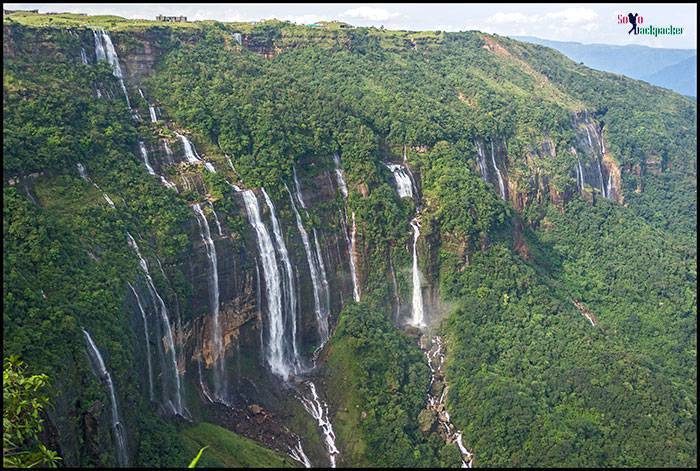
Playground of The Dazzling Clouds
There is a reason why Meghalaya is famous as the adobe of clouds. At every step in Meghalaya; you can observe the wild, wind-driven clouds playing in the valley or over the hills. From Barapani Lake in Shillong to Laitlum’s Canyon and from Tura Peak to Cherrapunji Hills; you can enjoy the view of seemingly restless clouds moving around. They often strike your face, wet your eyelids and touch your soul.

City of The Rains and The Waterfalls
Cherrapunji (locally known as Sohra) can be considered as the city of rains and waterfalls. It is recognized as the wettest region in the world, where clouds shower anytime and anywhere, without a waning. When it rains, it pours heavily in Sohra. However it gets settle in two-three hours. This is the beauty of the city of rain. If you did not experience rain in Sohra, then what else can you enjoy at the wettest place in the world?
Because of the excessive rain, the surrounding areas of Cherrapunji are blessed with many magnificent waterfalls. Some of the them are either visible from the main road or easy to reach, and they are always crowded with the tourists. Simultaneously, there are some more hidden away from the crowd in the deep forests. Negotiating them is itself a memorable experience.
Apart from Cherrapunji, the Jaintia Hills also boasts of the beautiful waterfalls. The Garo Hills around the border of Assam are equally full of mesmerizing waterfalls.
World of The Mysterious Caves
Wandering inside the deep caves of Meghalaya is a thrilling and daring adventure. Meghalaya has nine of the ten longest caves (1st to 9th, 10th one in Mizoram) in India, some of them are accessible only by crawling or swimming in the water. Krem Liat Prah, in Janitia Hills, is the longest cave in the Indian sub-continent. The surveyed and explored length of this cave is about 31 km as of now, but it may increase upto 40 km in future as nearby caves continue to be connected.
Meghalaya has approx one thousand surveyed caves varying in the length from 500 m to 31 km, that can provide you the ultimate caving adventures. Only few of them are lighted. The unique world of stalactites and stalagmites offers a chance to explore the millions of years old fossils as well as an opportunity to test your adrenaline rush.
Land of The Crystal Clear Rivers
In a country where the government approves a special budget for the cleanliness of the rivers, the rivers in Meghalaya display the highest standard of the cleanliness. The most famous among them is the Ungot River. It passes through Dawki forming the boundary line of the Khasi and Jaintia hills before entering in Bangladesh.
During the winter season, when there is no rain, the river looks so transparent that you can see all the way to the bottom. The Fishing Boats operating in the river seem to be hanging in the air. In the other parts of Meghalaya, the rivers may not look as transparent as Ungot River, but still their appearances are charismatic.
Land of The Sacred Grooves
Few parts of the deep forests spreading on the hills of Meghalaya are considered as sacred by the local community. It is believed that such forests, known as The Sacred Grooves, are the dwelling place of the invisible gods. It is a terrible crime to dirty or mistreat them in any way.
At some places, entry of outsiders is completely prohibited in the sacred grooves. However, the tourists are allowed in many sacred grooves. Making noise, shouting, messing, spitting, breaking of leaves or flowers, etc. are completely forbidden while passing through such sections of the forests.
Land of The Living Root Bridges
It is said that necessity is the mother of invention. In the ancient times, the local residents of Meghalaya encountered immense difficulty in traversing the swollen rivers during the rain. The turbulent form of the rivers caused many difficulties in front of them.
In the midst of the problem, they noticed the huge rubber trees standing tall on the banks of the river (Rubber Fig Tree, Ficus elastica). Afterwards, while crossing the river they discovered a unique way of constructing a natural bridge by interlocking the flexible roots of these trees among each other. The living root bridges are the finest examples of extraordinary courage and ever evolving imagination of the human mind.
Land of The Magnificent Lakes
Just like the pristine rivers and the magnificent waterfalls, the picturesque lakes mesmerize everyone in Meghalaya. Every visitor who passes through Guwahati-Shillong Highway get infatuated with the absolute charm of Umiam Lake.
Wonderful Confluence of Tradition And Culture
The social structure of Meghalaya is deeply rooted in the perfect harmony of the Christianity and the Hinduism. Majority of the population in Khasi and Garo Hills believe in the Christianity, therefore the state comes to an halt on Sunday. The urban areas are dominated by English speaking people who enjoy western fashion and music, but the countrysides carry a precious legacy of local dialects and traditional practices.
The Hinduism is a prominent religion in the Jaintia Hills, located in the Eastern part of the state. The Jayanti Mata Temple located in Nartiang is one of the 51 sacred Shaktipeeths of India.
Prevailing Heritage of Matrilineal Society
The unique aspect of the social life of Meghalaya is the practice of the matrilineal line of descent in many tribes. The tribes are said to belong to one of the “largest surviving matrilineal culture(s)” in the world. After marriage, the husbands live in the mother-in-law’s home. The mother’s surname is adopted by children. The youngest daughter of the family inherits all ancestral property.
When no daughters are born to a couple, they adopt a girl child and transfer their rights to property to her. Women are treated with respect and enjoy a dominant role in the society. Most likely that is the reason solo female traveller can also move freely without any trouble.
Youths Dancing to The Tunes of Western Music
Western music runs in the veins of the young population in Meghalaya. Their legs shake on the tunes of the rock bands. The NH 7 Weekender, usually held in the month of October near the Jaintia Hills, is one of the premier rock music festivals across the country.
Perfectly Smooth And Paved Roads
Due to the poor condition of roads in many beautiful areas of Northeast India, you have to be really adventures to drive on them. Fortunately, the major roads in Meghalaya are well-paved and perfectly smooth. Other roads in remote areas (e.g. Mawkyrwat, Kynrem falls, Rasini falls, Baghmara, Siju Cave etc.) are in poor condition, but other major tourist areas (Shillong, Jowai, Dawki, Cherrapunji, Tura, William Nagar etc) are easily accessible by any kind of vehicle.

2. Best Time to Visit Meghalaya
The identity of Meghalaya, all of its charm lies in its diverse natural attractions including clouds, rains, waterfalls, rivers, hills and forests. There are indecisive conflicts to determine the most suitable time to visit Meghalaya. If you are in love with the clouds and the waterfalls, you should be in Meghalaya during the monsoon. Then only you can recognize why Cherrapunji is termed as the wettest place on the earth.
During the monsoon, the cascading waterfalls of Meghalaya thunder with full force and the undulating hills get a pleasant green cover. However, simultaneously, the rivers also flow with the highest amount of water including mud, and the crystal clear water is not visible anywhere. It is advisable to carry an umbrella or a raincoat during the monsoon.
If you want to enjoy the crystal clear water in the rivers, fancy a bath in the natural swimming pool beneath the waterfalls or wish to capture the green and blue shades of nature in your photographs, then you should visit Meghalaya in the winter. However, most of the waterfalls turn into a thin stream of water by the end of January. Few rivers may turn into small currents.
If you visit Meghalaya from the last week of October to the last week of December, then your trip should be memorable definitely. If you are unable to visit Meghalaya in these two months, then its better to visit during the monsoon. After all, Meghalaya is the adobe of clouds. The summers are really dry for a state like Meghalaya and there is a dullness of yellow shade everywhere in nature.
If you are a privileged soul like me (relocated to Guwahati), then you can visit Meghalaya in each season. In the last three years, I visited Meghalaya multiple times, but I still prefer to enjoy it during the monsoon. I love the mystical settings of clouds in the valleys and the thundering waterfalls during the monsoon. Even after visiting so many times, I still look forward to the shades of blue and green in my photographs.
Note: In Meghalaya, the name of many villages begins either with Maw or Um. Maw means Stone in the Khasi language and Um means Water. If a village name begins with Maw, that means the village consist of a mountainous terrain. If a village name begins with Um, that means the village has a lake or river.
3. How to Reach Meghalaya?
There are two main gateways to reach Meghalaya from anywhere in India. First one is Shillong, the capital of Meghalaya. Second one in Guwahati (Dispur), the capital of Assam. Shillong is merely 100 km away from Guwahati, but there is huge difference in terms of connectivity with the rest of India. Let me explain all available means of the transport one by one:
How to Reach Shillong?
Shillong is the largest transport hub connecting every part of Meghalaya. To proceed anywhere in Meghalaya, you usually have to reach Shillong. The following options are available to reach there directly:
By Air: Shillong Aiport is located at Barapani, approx 30 km away from the city center, Police Bazaar. Alliance Air (Air India Regional) and Indigo Airlines, each operates one daily flight from Kolkata to Shillong. The 75-seater ATR aircraft is suitable to cater a limited number of tourists. The airport is based in a valley surrounded by the mountains from all the sides. The prevailing weather at Shillong plays a crucial role in the flight operations. The flight movement often gets cancelled due to the adverse weather. The airfare is also expensive between two cities.
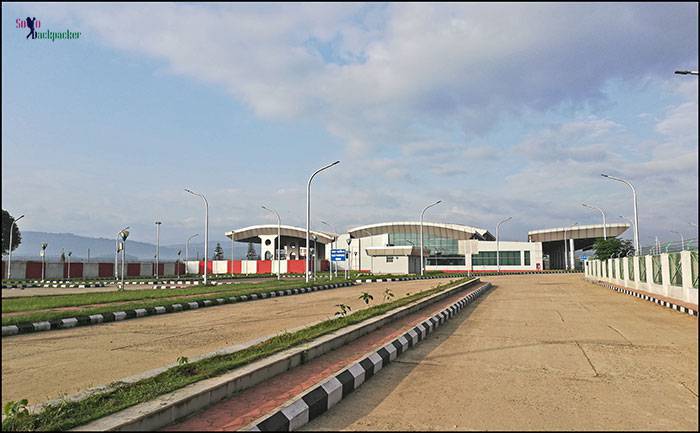
Shillong Airport to Shillong City: There is no regular transport available from the airport to the city. At the time of flight movement, you may get a shared cab from the airport to the city. Else, hiring a cab is the only possible option. The Meghalaya Transport Corporation (MTC) operates a 28-seater shared vehicle from the airport to the city during the flight movement. The fare for this shared vehicle is Rs 100 per person.
By Train:: There is no railway route to Shillong. The nearest railway station is Guwahati.
By Road: The option to reach Shillong by road is available from Guwahati itself.
How to Reach Guwahati?
First reaching Guwahati and then travel from Guwahati to Shillong is the most efficient and most economical way to reach Meghalaya. Guwahati is connected to the major cities in the country by rail, road and air. Direct flights to Guwahati are available from cities like Chennai, Bengaluru, Hyderabad, Mumbai, Kolkata, Jaipur, Ahmedabad, New Delhi. Similarly, many trains are available for Guwahati from the rest of the country.
Since Shillong is only 100 km away from Guwahati, it is advisable to reach Guwahati first and then travel to Shillong.
4. How to Reach Shillong from Guwahati?
There are two options available to travel from Guwahati to Shillong:
By Helicopter:The journey from Guwahati to Shillong can be completed by helicopter in just half an hour. But the facility of a helicopter with 4-5 seats cannot be used by everyone. Most of the time helicopter operation also depends on the weather, that can be bad at any time in Shillong. The fare for one side journey from Guwahati to Shillong is Rs 1500 per person.
The helipad in Guwahati is based at the airport, while the helipad in Shillong is located about half a kilometer before Elephant Falls at Shillong Cantt (about 12 km from the Police Bazaar). The helicopter can be booked from Guwahati Airport. Helicopter service is closed on Sundays. This service is also available from Guwahati to Tura for three to four days a week. From Guwahati, Tura can be reached in an hour by helicopter.
By Road: In general, the most preferred option to reach Shillong on any day, any time is by road from Guwahati. There are several modes of transport available for a road trip from Guwahati to Shillong:
1. Hired Vehicles: Many cars like Maruti 800, Alto, Swift Dzire can be hired as soon as you exit Guwahati Airport or Guwahati Railway Station. For slightly larger and comfortable vehicles like Innova, Ciaz, Breeza, Xylo, etc., one has to book through a tour agent in advance. The reserve cab fare from Guwahati to Shillong can vary from Rs 1600 (Maruti 800, 3 seat) to Rs 6000 (Innova, 6 seat). Apart from Shillong, Innova can also be found on a daily rental of Rs 4500-5500 for travelling around. Renting the Swift Desire on a daily basis can cost up to Rs 3000-3500.
2. Shared Vehicles: There are three main places in Guwahati for getting a shared vehicle to Shillong:
Guwahati Airport Parking Area: As soon as you exit from the terminal building, you may find many drivers shouting Shillong-Shillong and attracting the passengers. You can contact any of them to get a shared vehicle to Shillong. There is no safety issue while travelling in such kind of shared cabs and you sould carry on without any hesitation. The fare of this type of shared vehicle from Guwahati to Shillong is Rs 500 per person. The shared cabs are normally available from 10.00 AM to 08.00 PM from Guwahati Airport.
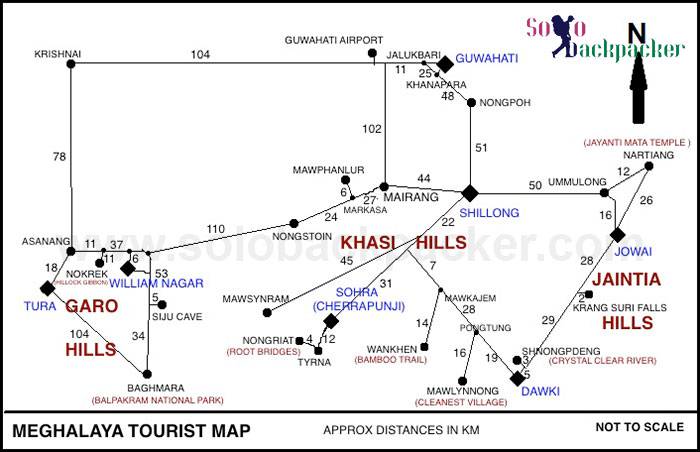
The Meghalaya Transport Corporation operates Tata Winger cabs twice in a day from Guwahati Airport to Shillong. The first cab leaves from Guwahati Airport at 0200 PM and the second one at 0400 PM. The fare is Rs 450 per person. They can be booked directly after the arrival at Guwahati Airport from the counter of Meghalaya Tourism based in the arrival hall.
Bus/Jeep Stand of Khanapara: Shared Vehicles like Sumo and Tempo Traveller are available from Khanapara to Shillong (also Tezpur, Jorhat, Dimapur etc.) from the Khanapara jeep stand in the outskirts of Guwahati. This option is reliable if you arrive at Guwahati Airport and don’t find a shared cab to Shillong. After arriving at Guwahati Airport, walk for one km to reach VIP chowk. From there, you can get a shared auto to Jalukbari. From Jalukbari stand, you can get a shared auto to Khanapara. The Sumo fare from Khanapara to Shillong is Rs 170 per person.
Public buses also ply from Jalukbari to Khanapara, but their route passes through the congested areas (Kamakhya, Paltan Bazar, GS Road, Six Mile etc) in the city and they take a lot of time to reach Khanapara.
Paltan Bazar Area: This option is good if you arrive at Guwahati Railway Station. After exiting Guwahati station proceed towards the Gold Digital Cinema located in Paltan Bazar. On the road-side, you may find many shared sumos waiting for the passengers going to Shillong. The Sumo fare from Paltan Bazaar to Shillong is Rs 170 to Rs 200 per person.
3. Public Buses: The Assam State Transport Corporation (ASTC) operates several buses from Guwahati to Shillong throughout the day. They are available from the Inter State Bus Terminus (ISBT, adjacent to the Tirupati Sri Balaji Temple) near Garchuk. The ISBT is located on the main road from Jalukbari to Khanapara. Private operators also run 3-4 private buses in a day from Guwahati to Shillong. The fare of these buses is Rs 120 per person. However, the bus services are highly unreliable, and most of the people prefer to travel by a shared Sumo or a shared taxi.
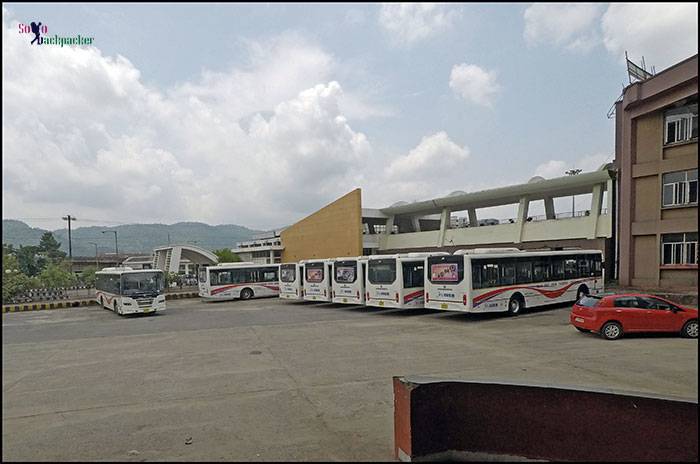
4. Ola/Uber services: The fare on both sides of Ola Outstation between Guwahati to Shillong is Rs. 3200 (hatchback, eg Maruti Alto) to Rs. 3700 (sedan, eg Swift Desire) per car. One sided journey from Guwahati to Shillong is not allowed on Ola platform.
On the Uber platform, one sided travel from Guwahati to Shillong is allowed and the charges vary from Rs 2200 to Rs 2500 per car.
5. Zoom Car: If you love to drive a car, then the Zoom Car facility is available at Guwahati Airport. You can travel anywhere with a self-drive car. As I said earlier that the highway is smooth and provides attractive views of the countryside. Most of the roads in Meghalaya are also in good condition. The office of the Zoom Car is about half a km from the airport. Vehicles like Creta, Baleno, i20, EcoSport, Breeza are available to choose as a self-drive car.
Note: 1. On the way from Guwahati to Shillong you can get the delicious Pineapple from the road-side shops before Nongpoh.

2. Most of the shared vehicles drop you near the Police Bazaar in Shillong. The bus stand for the public buses is also near Police Bazaar.
3. Shared Sumo is available from Anjali Point in Shillong while coming back to Guwahati from Shillong.
5. Public Transport in Meghalaya
Meghalaya maintains an excellent system of urban transport. Tourists arriving in Meghalaya have the following options:
1. Shared Jeeps: Yellow coloured Sumo jeeps are the best option to travel from one tourist place to another in Meghalaya. These jeeps connect Shillong with every major town in Meghalaya. You can also get the shared Sumo jeeps from Shillong to Kohima in Nagaland, Aizawl in Mizoram and Tezpur, Silchar in Assam.
Sikkim is in your mind? Read here about the public transport in Sikkim: Travel in Sikkim Using Public Transports
2. Small Cars like Maruti 800 or Alto: Shared Sumo jeeps are normally suitable to travel from one town to another. Once you arrive at your destination, for example, Cherrapunji (Sohra); you would get the compact cars like Maruti 800 or Alto to cover the major tourist attractions. These small cars, painted in black and yellow, also operate as a shared mode of transport. You can stop any black-yellow painted car by waiving your hand. The typical fare is Rs 10-Rs 20 for a single person to travel from one place to another within the city limits. You can also hire them exclusively.

3. Public Buses: Public buses are also available within the city of Shillong and Tura. You may choose them to reach from one place to another in a city. Outside the city limits, their frequency is limited, and they may not be a good choice for frequent hon-on hop-off kind of travelling.
6. Bike Rentals in Meghalaya
Shillong has several rental shops that rent bikes (motorcycles) and scooty to travel in the state of Meghalaya. The typical rate for a bike is Rs 800 and for a scooty is Rs. 400 per day. The road conditions in Meghalaya are very good. The distance between two major destinations is hardly more than 50 km, therefore it is easy to explore around from one place to another on a motorcycle.
7. Major Tourist Places in Meghalaya
Meghalaya can be primarily divided in three regions from a tourist point of view:
Tourist Places in The Khasi Hills
It is considered as the heart of Meghalaya. Every traveller in Meghalaya wants to cover the tourist places of the Khasi Hills. It includes the destinations like Shillong, Sohra (Cherrapunji), Nongriat (Living Root Bridges), David Scott Trail, Mawsynram, Mawlynnong (famous as the cleanest village in Asia). Other small attractions include Laitlum Canyon, Smit Village, Mawphanlur, Mawphlang Sacred Grooves etc.

Tourist attractions in the Khasi Hills region are spread over a large area. Shillong is the main base to explore all the attractions in this region. After Shillong, you can spend few more days in Sohra to enjoy the beautiful waterfalls and caves. Few places are not connected directly with each other. In that case, you have to come back to Shillong repeatedly to get another public transport to such kind of places.
Tourist Places in The Jaintia Hills
The Jaintia Hills region lies east to the Khasi Hills. The major tourist destinations in the Jaintia Hills include Jowai and surrounding areas, Jayanti Mata Temple in Nartiang, Krang Suri Falls, Wahrashi Falls, Phe Phe Falls, Dawki (Boat ride in Umngot River and India- Bangladesh border at Tamabil), Shnongpdeng (Crystal Clear River Water) etc.
Interested in the Valley of Flowers Trek? You can find all details here: Valley of Flowers Trek in Uttarakhand
The most prominent tourist spot of the Jaintia Hills is Dawki (81 km from Shillong), which is easier to reach from Shillong than Jowai (56 km from Dawki). You can explore the tourist attractions like Shnongpdeng and Tamabil from Dawki. Krang Suri Falls and Phe Phe Falls lies on the road from Dawki to Jowai. For other attractions like Tyrshi Falls, Nartiang etc; you can stay at Jowai town (65 km from Shillong) for few days to travel around.
Tourist Places in The Garo Hills:
This is the least travelled area of Meghalaya. It is presumed as the most hostile area of Meghalaya from the safety point of view. I had the same assumption until I visited this area recently. I explored many remote places in the Garo Hills while riding alone on a motorcycle. They are really remote areas like Chokpot and Baghmara, and the roads are in extremely bad shape. After visiting Garo Hills, I found that the people have a misleading impression of this region. It is absolutely safe like another tourist destination in Meghalaya. The local people are very nice, kind-hearted and friendly in nature.

Major tourist attractions in this region are Tura, William Nagar, Baghmara, Siju Cave, Nokrek National Park and Balpakram National Park. The road is in terrible shape beyond Tura and William Nagar, but you can make William Nagar as your base to explore the tourist places in the Garo Hills. You may spend few nights in Tura also.
8. Accommodation in Meghalaya
Accommodation in The Khasi Hills
The Khasi Hills of Meghalaya receives a lot of tourist traffic. Therefore, there are sufficient tourist infrastructure at every major tourist destination in the Khasi Hills. Tourist places like Shillong and Cherrapunji have multiple options for the night stay. While trekking to the living root bridges and the rainbow falls, you may consider Tyrna Village or Nongriat Village for the night stay. Mawlynnong, the cleanest village in Asia, has plenty of homestays.
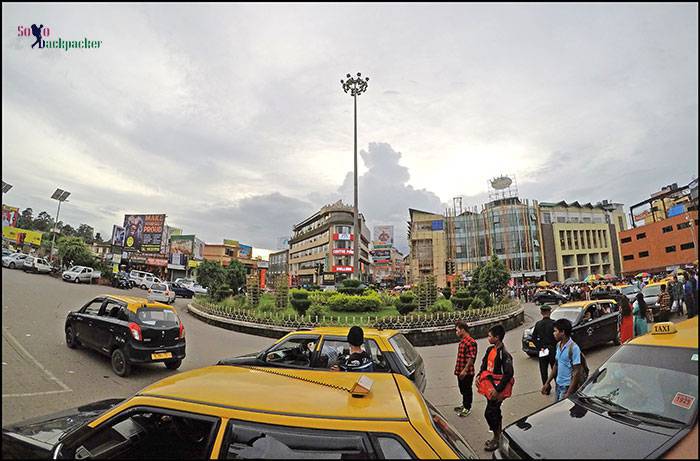
Other tourist places like Smit Village, Mawphanlur, Mawphlang, Mawsynram, Mawkyrwat etc have limited number of options for the night stay. While trekking on the Bamboo Trail, you may not find any accommodation at Wahkhen Village. It is always better to stay in Shillong, 48 km away.
Accommodation in The Jaintia Hills
In Jaintia Hills, you may find 2-3 simple hotels in Jowai and 4-5 high-end properties are there near Thadlaskein Lake, 10 km before Jowai Town, while proceeding from Shillong side. A proper accommodation is not available in Nartiang Village (Jayanti Mata Temple), but you may coordinate with the temple priest for the night stay. A Forest Rest House is also there.
On Jowai-Dawki Highway, you may find few homestays at Jarain village. It can be difficult to locate them in the night. Few km after Jarain, you may get homestay on the main road near Krang Suri. It is very basic in nature and arranging food is a big issue. The prices of the rooms are highly inflated.
If you are comfortable, try reaching to the base of Krang Suri Falls, where you can get an excellent option of night camping or bamboo houses at reasonable prices.
Moving beyond Krang Suri Falls towards Dawki, the next available options are either in Shnongpdeng Village or in Dawki. It is always better to stay at Shnongpdeng village for a memorable experience.
Accommodation in The Garo Hills
While travelling in the Garo Hills, you can get accommodation at Asanang (18 km before Tura, tourist lodge), Tura (few hotels), Williamnagar (a tourist lodge, 2-3 hotels), Siju Cave (a tourist lodge) and Baghmara (two tourist lodges). Since the tourist traffic is very low in this region, an advance booking is not required at most of the time.
Accommodation Cost in Meghalaya
The cost of accommodation is very high in Meghalaya. If you have enjoyed your stay at the homestays in Himachal Pradesh or Uttrakhand, then a homestay in Meghalaya may give you a surprise. While it is possible to get a homestay in Uttrakhad or Himachal Pradesh within the budget of Rs 800 per night, the same kind of accommodation may cost you just double in Meghalaya.
Shillong offers plenty of choices ranging from the dormitories to the high-end hotels. Therefore, you are free to choose an accommodation in Shillong according to your need and your budget. You don’t have such luxury at all other places where a modest looking homestay may cost you Rs 1500 upwards. The cost of a well-maintained homestay is at least Rs 2000 per night while a good hotel may cost you around Rs 3000 per night. You may get an accommodation at the lower cost. This is just for an idea in general. Negotiations are not possible in many cases and the owner may get annoyed if you continue negotiating for a longer period.
The Camping is also prevalent at the major tourist places and you may get a tented accommodation in the range of Rs 500 to Rs 700 per night for a single person. At Krang Suri Falls, a tented accommodation is available at the cost of Rs 1000 per person per night. The cost includes lunch, dinner, breakfast and entrance fee for Krang Suri Falls with a camera. You may find similar tented accommodation at Shnongpdeng, Tyrna, Mylliem, Mawkyrwat and many other places. At few places like Shnongpdeng and Krang Suri, you may also pitch your own tent after taking approval from the village panchayat or the land owner. This may cost you from Rs 100 to Rs 500 per night.
9. Vegetarian Food in Meghalaya
Majority of the population of Meghalaya is non-vegetarian. Pork meat is very common here. Some tourists may feel that it is difficult to get vegetarian food in Meghalaya. But in reality there is no such problem. Rice, lentils and vegetables are cooked everywhere. Bread is also easily available in the big towns. The people of North-East India are not fond of spicy food, so you may get only boiled vegetables without spices. Milk tea found on the roadside dhabas is also very good.
10. Mobile Networks in Meghalaya
The entire state has a good coverage of Mobile networks. Unless you wander in a really remote area, there shouldn’t be any problem in the mobile networks. All three private operators Airtel, Vodafone and Reliance Jio as well as government-owned BSNL has good coverage at the main tourist places. Airtel coverage is slightly better than others in the remote areas. Mobile networks are not available inside the caves.
11. Ideal Itinerary for Meghalaya
Most of the area of Meghalaya remains untouched even today on the tourism map. No one travel beyond Jowai in the Jaintia Hills or beyond Tura in the Garo Hills.. For most of the visitors, Meghalaya means Shillong, Cherrapunji and Dawki only. For the best experience of Meghalaya, my advice would be you start from Shillong and explore the tourist places in Cherrapunji. Then from Cherrapunji travel back to Shillong and proceed to Dawki. If possible, try visiting Krang Suri waterfall from Dawki, and then return to Shillong via Jowai. This way you would be able to have memorable experiences of the most famous tourist destinations of Meghalaya.
A detailed travel guide to visit Ladakh: Ladakh Travel Information With Tips to Travel Responsibly
You can spend from two days to ten days in the entire journey of Shillong-Cherrapunji-Dawki-Krang Suri-Jowai-Shillong route. Some people also prefer going on the sightseeing tours offered by the Meghalaya Tourism Development Coroprtaion. They offer one day tour on Shillong-Cherrapunji route and one day tour on Shillong-Dawki route. If you don’t have sufficient time, you may prefer this option.
Meghalaya is one of the most beautiful states in India, particularly during the monsoon. If you plan to visit Meghalaya, try spending at least a week in the state. In a week, you can complete the Shillong-Cherapunji-Dawki-Krang Suri-Jowai-Shillong circuit very comfortably. That experience would be worth for the lifetime. If you don’t have time constraints, you may try spending three-four months in the state from July to October. It’s totally worth. 🙂 Explore and enjoy the cloudy world of Meghalaya.


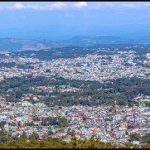
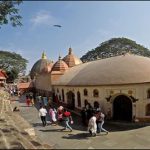
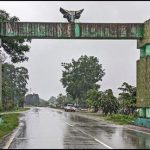
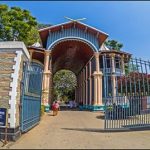
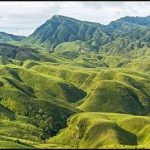

Exploring Meghalaya, the ‘Adobe of Clouds,’ is a dream for many adventurers. These travel tips provide invaluable insights for navigating its misty landscapes, experiencing its rich culture, and embracing the warmth of its people, ensuring a memorable and fulfilling journey.
Yes. Meghalaya is such a beautiful destination. Thank you for the feedback.
Very informative and detailed post for somebody travelling first time to Meghalaya. Beautifully summarized!
very well explained. Thank you
Very informative article… Thanks for sharing this.
A very good extensive account of Meghalaya.
Thank you.
It is really a neat and well explained post which I didn’t find anywhere.
Thank you very much 🙂
Well written and helpful. Thank you.